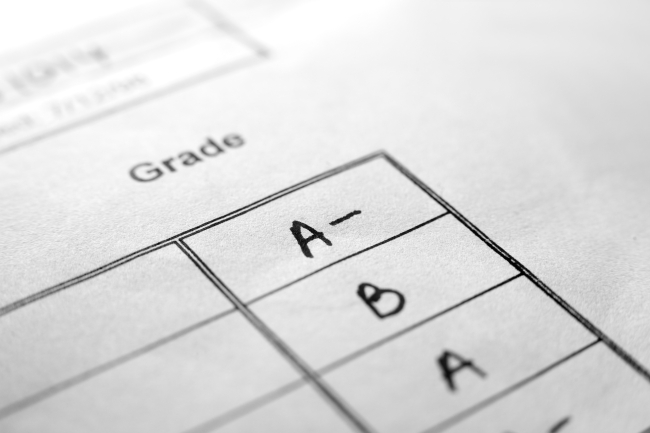You have /5 articles left.
Sign up for a free account or log in.

iStock
If a student wants to earn an A in a class, the best way to do that might not involve concentrating on the grade at all.
Instead, students should set their goals on the shorter-term, more tangible parts of a class -- committing to doing homework, showing up to a certain number of classes or dedicating a set time for exam preparation -- according to a working paper (abstract available here) from the National Bureau of Economic Research.
The paper’s authors measured two types of goal setting, performance based and task based. After surveying close to 4,000 college students in two field experiments, they found that performance-based goals -- setting a goal to earn a certain grade in the class used for the survey -- didn’t have a statistically significant effect on whether a student actually got that grade. But when students set their goals on the tasks required to earn those grades, they performed better over all, even though that wasn’t explicitly their goal.
“If you take the view that students don’t have the self-control to study as much as they want to, then something like goal setting is going to be effective,” said Victoria Prowse, one of the authors of the paper and an associate professor in the economics department at Purdue University.
The study was born out of the idea to look at ways to motivate students to do better academically, Prowse said. Financial incentives -- such as tying financial aid to grade point averages, or rewarding students financially for certain grades -- are inherently expensive and hard to do at scale. Goal setting, on the other hand, is easier and cheaper to replicate, which makes finding effective ways to do it all the more important, Prowse said.
“Performance goals are maybe the most obvious goals you could set. Students want to get an A or an A-minus,” Prowse said. “If we want successful changes in our classrooms … we want to be focusing that goal setting on input rather than output.”
Ultimately, the authors propose potential changes to the organization of universities in light of their study. The paper names ways for courses and academic advising services to design themselves around task-based goal setting in an effort to help students more effectively.
“In a fully online course, it would be especially easy to incorporate task-based goal setting into the technology used to deliver course content,” the paper reads. “For example, students could be invited to set goals for the number of end-of-module questions they will answer correctly before progressing to the next module.”
The students surveyed were undergraduates in an on-campus, four-credit, semester-long class at an unnamed public university. The class was “well established prior to [the] study” and requires a C or better to graduate with a degree in the subject. In the task-based group, students were asked to set a goal for the number of online practice exams they would do as part of their preparation for the midterm and final exams.
In the performance-based group, on the other hand, students set goals for the letter grades they wanted to get in the course as a whole, as well as on the midterm and final exams. While both groups performed better than the control group, the performance-based group’s results were not statistically significant.
“Numerous studies in educational psychology report noncausal correlational evidence which suggests that performance-based goal setting has strong positive effects on performance,” the paper reads. “Another contribution of our paper is to cast doubt on this correlational evidence using our experimental finding that performance-based goals have small and statistically insignificant effects on performance.”
Prowse said that when students set performance-based goals, it’s possible that they don’t really know what work needs to be done to reach that goal. Task-based goals, on the other hand, are more tangible. And by putting in the work to do certain tasks related to homework and studying, the students went on to earn better grades.
“They really want to get an A, but they don’t know what to do to get an A,” she said of students who use performance-based goals. “With task-based goals, we can kind of steer a student toward actually putting in effort on activities which could be rewarding in some sense to their performance.”
Important caveats to the study are that task-based goal setting is, generally, more effective for male students than their female peers, and that it’s more effective for helping students who are already doing well than low-achieving students, Prowse said.
“There’s quite a lot of research in psychology, and in particular in educational psychology, that shows that male students might have more self-control problems than female students,” she said. “So the female students, in a way, are already managing themselves pretty well.”
That goal setting isn’t as effective for low-achieving students is one of the limits of the study -- it’s not a panacea for every student.
“It helps students be more likely to get an A, or an A-minus, or even a B-plus,” Prowse said. “You might think they’re kind of low-hanging fruit, the students who are struggling getting C’s and D’s -- these goals are really pushing students up to get the best grades rather than helping low-achieving student.”







